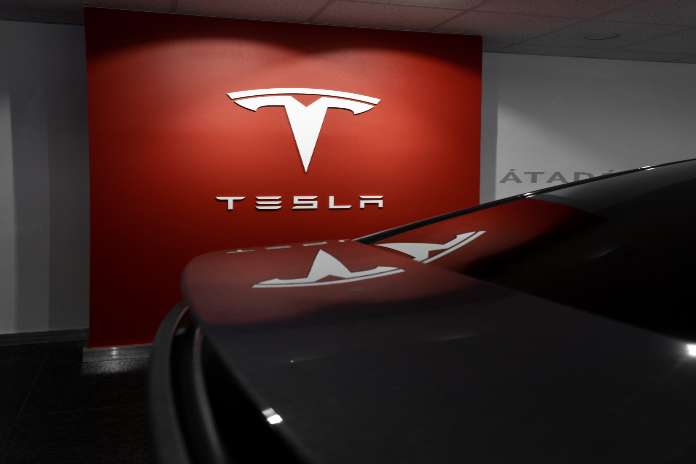As Tesla Inc. (NASDAQ:TSLA) continues to push the boundaries of autonomous driving with its Full Self-Driving (FSD) system, concerns over the safety of this technology are growing. Recent incidents and test drives have highlighted potentially dangerous behaviors, raising questions about whether Tesla’s FSD can operate safely on public roads. The debate over Tesla Full Self-Driving safety is intensifying as the company prepares to unveil new vehicles designed to operate as robotaxis.
Tesla Full Self-Driving Safety Under Scrutiny
The safety of Tesla’s Full Self-Driving system has been called into question following multiple incidents where the technology performed erratically. William Stein, a technology analyst at Truist Securities, recently tested Tesla’s FSD system three times and encountered troubling issues each time. On his most recent drive, Stein’s Tesla made an illegal and potentially dangerous maneuver, which left his son, who was in the car, terrified. These experiences, along with other reported crashes, have drawn the attention of federal regulators, who are investigating Tesla’s automated driving systems.
One of the most serious incidents occurred in April near Seattle, where a Tesla using Full Self-Driving struck and killed a motorcyclist. The driver admitted to looking at his phone while the car was operating on FSD, leading to the fatal accident. This tragedy has intensified the focus on whether Tesla’s technology is safe enough to be used without constant human supervision.
The Reality of Tesla’s Autonomous Driving Capabilities
Elon Musk, Tesla’s CEO, has long touted the potential of Full Self-Driving to revolutionize transportation by enabling cars to drive themselves more safely than humans. He has promised that Tesla will soon deploy a fleet of robotaxis that can operate without human intervention. However, the growing body of evidence suggests that Tesla’s Full Self-Driving system may not be ready for such widespread use.
Safety experts and researchers have expressed skepticism about the reliability of Tesla’s approach to autonomous driving. Unlike other companies, such as Alphabet Inc.’s (NASDAQ:GOOGL) Waymo and General Motors’ (NYSE:GM) Cruise, which use a combination of cameras, radar, and lidar to navigate, Tesla relies solely on cameras and artificial intelligence. Critics argue that this vision-only approach is insufficient for handling complex driving situations, especially in poor weather or low-light conditions.
Regulatory and Legal Challenges Ahead
The concerns over Tesla Full Self-Driving safety have not gone unnoticed by regulators. The National Highway Traffic Safety Administration (NHTSA) has been investigating Tesla’s automated driving systems for more than two years, focusing on dozens of crashes that raise safety concerns. Earlier this year, NHTSA pushed Tesla to recall its Full Self-Driving system, citing instances where it could disobey traffic laws, thereby increasing the risk of accidents.
Moreover, Tesla’s data reporting has come under scrutiny. Musk has released data showing miles driven per crash for Tesla’s less-sophisticated Autopilot system, but safety experts argue that this data is misleading. It only accounts for serious crashes involving airbag deployment and does not consider how often human drivers must intervene to prevent accidents.
Investors and Consumers: What’s Next?
As Tesla prepares to unveil a new vehicle designed specifically for use as a robotaxi, the pressure is on to prove that its Full Self-Driving system is safe. Musk has promised that FSD will surpass human drivers in safety by the end of this year, yet many experts remain doubtful.
For investors, the ongoing debate over Tesla Full Self-Driving safety presents both risks and opportunities. While some believe in Tesla’s long-term vision and are willing to bet on the company’s ability to overcome these challenges, others are more cautious, noting the significant gap between Musk’s promises and the current reality.
For consumers, the message is clear: Tesla’s Full Self-Driving is not yet at a point where it can be trusted without human supervision. The technology continues to evolve, but as recent incidents have shown, there is still a long road ahead before autonomous driving can be deemed safe for all users.
Conclusion
The growing concerns over Tesla Full Self-Driving safety highlight the challenges and uncertainties surrounding autonomous driving technology. As Tesla continues to push forward, both regulators and the public will be closely watching to see if the company can deliver on its promises while ensuring the safety of its users. For now, caution remains the watchword as Tesla navigates the complexities of bringing fully autonomous vehicles to the mainstream.
Featured Image: Megapixl



